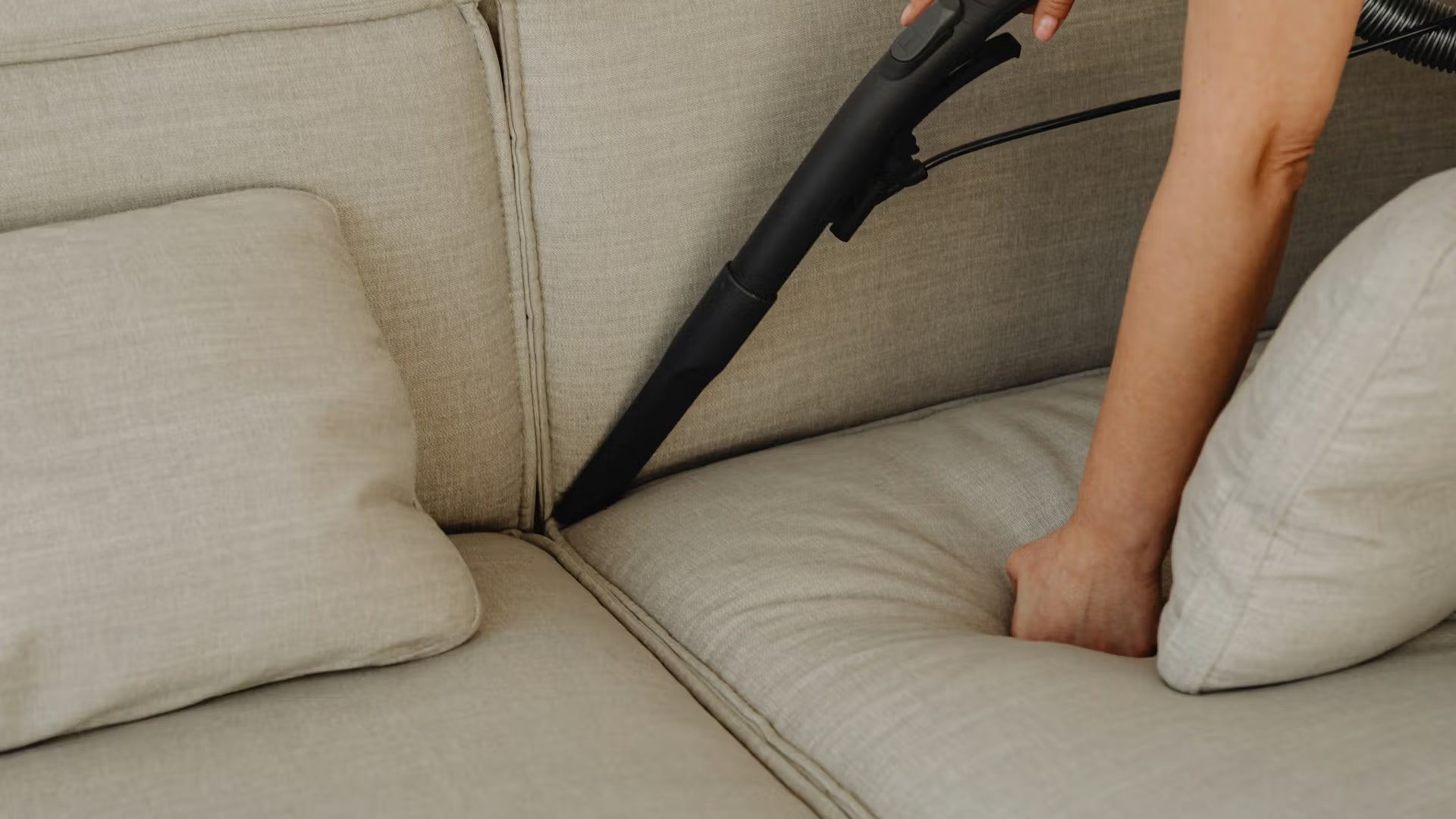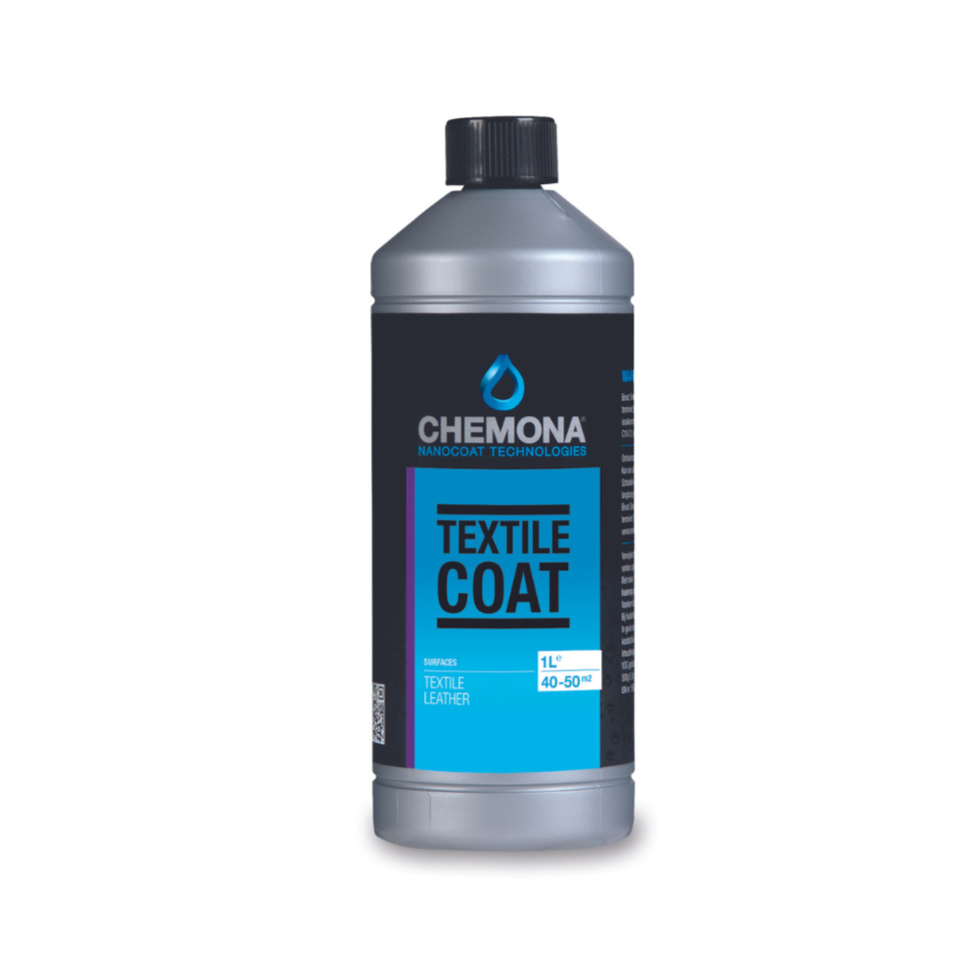A sofa is often the heart of the living room. You sit on it after a long day at work, watch TV shows, read a book, or plop down with friends, children, or pets. In short: it takes quite a beating. Yet, many people only think about protecting it when it's already too late, when that first ring appears or a glass of wine is accidentally spilled. That's when the term "sofa impregnation" suddenly comes into play. But what exactly is it? What does it do, and is it really worth it? In this blog post, we'll take you step-by-step through the most frequently asked questions about sofa impregnation, so you know exactly what's in it for you and whether you can do it yourself or is it better to outsource it.
Why should I impregnate my sofa?
You impregnate your sofa to protect the fabric or leather from stains, moisture, dirt, and grease. The impregnating agent forms an invisible protective layer over the surface of the upholstery. This means that liquids are much less likely to penetrate the fibers of your sofa, giving you much more time to blot them up before a permanent stain forms. Think of red wine, chocolate milk, or olive oil—all things that would normally soak into the fabric immediately. Impregnating them effectively keeps them "on" the fabric, making them much easier to remove.
It's a real boon, especially for light-colored sofas. But dark sofas also benefit from extra protection, because stains may be less noticeable, but they're definitely there. Moreover, impregnating extends the life of your furniture by helping to keep dirt at bay. And the less intensive scrubbing or steam cleaning you have to do, the less wear and tear. In short: impregnating is a smart and relatively inexpensive way to keep your sofa fresh, clean, and beautiful.
How much does it cost to have a sofa impregnated?
The cost of impregnating varies depending on who does it and the size of your sofa. If you have it done professionally, you'll pay an average of between €50 and €150 for a three-seater sofa. For larger sofas or corner sofas, that price can increase. Some companies also offer a combination of cleaning and impregnating, which can be cheaper in the long run.
Prefer to do it yourself? Then you'll be better off with a good spray Costs between €15 and €30, depending on the brand and content. Keep in mind that this will cost you time and run the risk of uneven coverage. So choose what best suits your situation: convenience or savings .
Does impregnation also help against wine, coffee or grease stains?
Yes, impregnation works extremely well against most liquid stains, such as red wine, coffee, cola, fruit juice, and even grease or oil to a certain extent. It protects your sofa by creating a protective film that prevents liquids from penetrating the fabric directly. This keeps the stain on the surface, and you can often remove it completely with a cloth or paper towel before it causes any damage.
Note: it's not a miracle cure. If you only discover a stain after a few hours, it's likely that it has already partially set, especially with grease. However, impregnating will almost always make the stain less deep and therefore easier to treat. And in some cases, a simple cloth and some water can solve a large part of the problem. That means fewer chemical cleaning products, less effort, and above all, less stress.
Can every sofa be impregnated?
In most cases, yes. Virtually all modern sofas can be impregnated without any problems, whether they're upholstered in fabric or leather. Standard fabrics like cotton, polyester, or microfiber usually respond very well to impregnation. Faux leather and genuine leather can also be treated, provided you use a suitable product that nourishes and protects the material.
With special fabrics like silk, linen, or wool, you need to be careful. These natural materials can be sensitive to some impregnating agents. Therefore, it's always wise to test an inconspicuous corner first, or to consult a specialist. Do you have a designer sofa from an exclusive brand with exotic upholstery? It's best to leave it to a professional. They know exactly which agent is suitable for which material, and you'll prevent yourself from accidentally doing more harm than good.

How long does an impregnation layer last?
On average, an impregnation layer remains effective for about one to three years, depending on how intensively you use the sofa. In a household with children, pets, or frequent drinks, the protective layer can wear out faster. Cleaning the sofa, especially with water or cleaning products, also affects its performance, as the protective film gradually breaks down.
You'll know it's time for a new treatment when liquids no longer sit on the fabric but soak right in. This reduces the effectiveness, and you can re-impregnate the sofa. Fortunately, this is a task you can easily repeat without damaging the furniture. In fact, it can actually help maintain the quality of your sofa. Regularity is your best friend, just like with polishing your shoes or maintaining your car.
Is impregnation harmful to the fabric or the environment?
Most modern waterproofing products are water-based and free of harmful substances such as fluorocarbons, which were sometimes used in the past. They are safe for people, animals, and materials, although it is still important to follow the instructions. However, there are differences between them. Some inexpensive sprays still contain substances that can be harmful to the environment or health. So always check the ingredients or look for a product with an eco-label.
Impregnating the fabric itself isn't harmful, as long as you use the right product for the right material. On the contrary: it helps protect the fabric from intensive cleaning, meaning you'll ultimately need to scrub and steam less. This extends the life of your furniture. It's a win-win situation, provided you handle the product responsibly and always ensure good ventilation during and after application.

Should I clean my sofa before impregnating it?
Absolutely. Impregnating a sofa only makes sense if it's clean and dry. Otherwise, dirt, dust, and old stains will be trapped under the protective layer, which can not only be unsightly but also hinder the product's effectiveness. Use a vacuum cleaner with a furniture brush attachment to remove crumbs, hair, and dust, and clean visible stains with a suitable upholstery cleaner.
Then let the sofa dry completely. This is important, because moisture in the fabric prevents the impregnating agent from adhering properly. Impregnating is essentially step two of a good maintenance plan: clean first, then protect. And if you really want to do it right, repeat this entire process every year or year and a half, depending on usage.
Can I impregnate my sofa myself, or do I have to have it done?
Both options are possible. You can easily do it yourself with a waterproofing spray from a store or specialty shop. This is especially useful if you have a standard fabric sofa and are handy with DIY projects. Just be sure to follow the instructions carefully: spray evenly, maintain a safe distance, and test the product on an inconspicuous area first. Also, remember to ventilate well during application.
However, professional waterproofing is often a good idea. A professional often uses industrial products that penetrate deeper and last longer. They also know exactly how to treat delicate fabrics without taking risks. Especially with expensive or fragile sofas, it's worth spending a little extra. Because one wrong spray can be costly in the worst-case scenario.

How long should the sofa dry after impregnating?
After impregnating, the sofa needs to dry for an average of 4 to 12 hours, depending on the type of product and the ventilation in the room. During this time, it's important not to sit, lie down, or place anything on it. The fabric needs time to properly absorb the product and harden. In a well-ventilated room at room temperature, the process is often finished within an evening.
However, it's wise to wait 24 hours before using your sofa intensively again, especially if you have children who like to jump on it or pets who sleep on it. Give the impregnating agent a chance to work its magic, and you'll enjoy it much longer. A little patience will ultimately give you a sofa that's more resistant to the daily onslaught of crumbs, paw prints, and spills.
Does impregnation also protect against pets?
Impregnating is definitely helpful for pet accidents, like wet paws, saliva, or a knocked-over water bowl. The protective layer prevents moisture and dirt from penetrating the fabric, making cleaning faster and easier. Odors are also less likely to penetrate the fabric, which is especially helpful if your dog or cat likes to lie on the couch.
Note: Impregnating doesn't protect against scratching cats or dogs with sharp claws. It doesn't make your sofa "indestructible." But it does mean you'll spend less time cleaning, which is a big advantage in a household with a lot of pets. Tip: Combine impregnating with a removable sofa cover or throw for extra convenience.
Common mistakes when impregnating a sofa
There are a few mistakes people often make when impregnating their sofa—and they're easy to avoid. The first: impregnating without cleaning. This traps dirt under the protective layer, leading to discoloration or permanent stains. The second: using too little or too much spray. A layer that's too thin isn't effective, while a thick layer can cause stains. And the third mistake: using the sofa again too soon. Give the impregnating agent plenty of time to dry completely, otherwise you risk reducing its effectiveness.
Another common mistake is using the wrong product. Not every product is suitable for every type of fabric or leather. So always read the packaging carefully or seek professional advice. This way, you'll avoid disappointment and damage.



